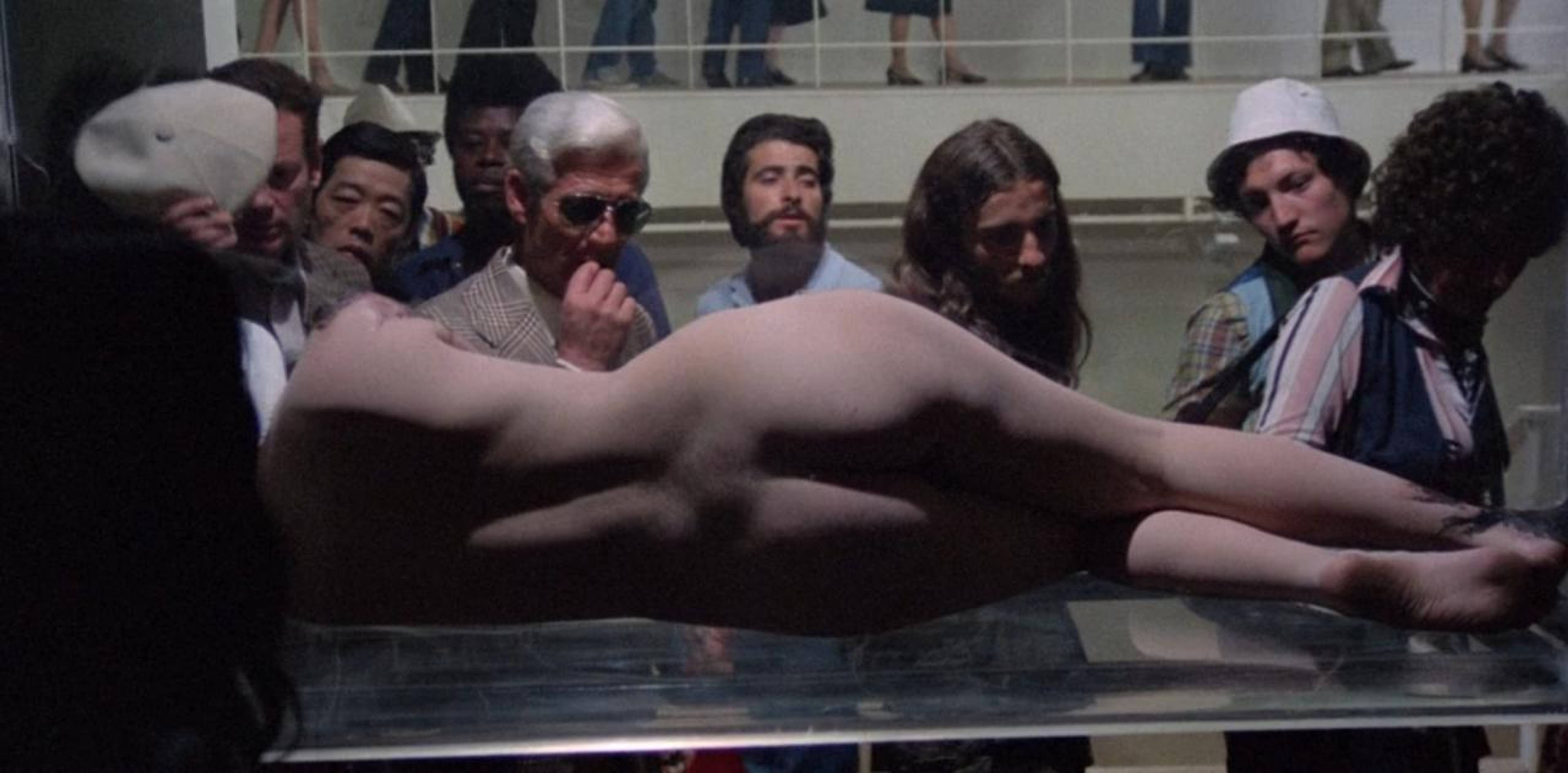I don’t remember when I first stumbled onto a genre of mystery/crime film that is called Giallo, Italian for yellow. It must have been late night movie watching on Sundays as a kid, on a tiny black and white set that turned on and off with a little dial. I’ve always been an insomniac, but Sundays are-the worst.
Hilariously dubbed Italian crime flicks were a good distraction. One film in particular stuck, The Pyjama Girl Case (1977) by Flavio Mogherini, who was a progenitor of the giallo genre. The pyjamas in question are in fact yellow, and the original Italian title keeps gialla, though the English has somehow erased it. Is it the prurience of English that yellow pyjamas sound too much like a urinary accident? I don’t know. Either way, the movie is not quite soft porn, though the music and story lines might at first seem so, superficially, anyway. Ostensibly, the narrative follows a retired detective who is investigating the case of a badly burned female body found on the beach by a young girl, whose screeching sets the stage for the fun to come. Before hyper-slick editing, the screams in the 70s were enhanced by quick zooms, in and out.
The whole thing takes place in Sydney of all cities, and if you manage to find a pirated copy, there might be the original English track for dialogue, but the dubbed Italian is much truer to the original. The sexual politics are stunning, a complexity that seems untimely now that Instagram and TikTok having basically replaced the soft core content of old. The yellow pyjamas found on the body were a gift, from a female admirer we learn in a flashback scene, who makes advances on the burnt victim (before she’s set ablaze). This is suspicion enough, it seems, for all of the dicks (cops, but they are all dicks ) to blame a woman who has now left Sydney. The victim turns out to have been raped by five different men, and unable to determine her identity due to the scorched visage, the police decide to preserve the naked remains in a display case, a kind of public exhibition of sorts. She’s dropped inside a glass vitrine on her side, and the reactions range from old women fainting to leering compulsive masturbators putting a new image in their spank bank. In one scene, we barely see the curve of the victim’s hips as an older gentleman focuses squarely on her crotch.
There are fascinating crowd shots of the onlookers, and even an upstart photographer who tries to snap a pic before he is summarily pushed aside by a policeman amongst the rabble. The idea of the show is to determine who the victim was, though few in the audience seem either fascinated or horrified by the preserved torso on display. Are they all local oglers trying to catch a glimpse of someone displayed without their consent? Or are these visitors there to fulfil some semblance of civic duty, to do their part for the common good? You decide.
Gialli are making a comeback – think of directors Mario Bava or Dario Argento, whose Suspiria (1977) was recently remade – maybe because of some kind of fascination with an older version of the fluidity of lifestyle and self-presentation that has not been totally consumed by the image map. At the risk of sounding nostalgic (too late?), it’s wonderful to see the hideous world of men in such a silly context, parodied, violent, but all the more real because so. The film features only two decent dudes, and they’re both extremely past their prime, and one of them dies. The others include a peeping tom who lives alone in a hut plastered with nude images of women (he’s the first suspect), a jealous husband who is cuckolded by an affair with a buff factory worker, and then a horribly stereotyped older gay man who beckons the retired inspector into his bubble bath while he sips from a glass of red wine, the list goes on. Like an old car, Mogherini documents the full process of its breakdown, from shiny new to old and refined to an abandoned junker that stands alone on the beach, burnt to a crisp along with the body of the victim.
Like so much in Italian cinema, and the museum in general, the rituals of the church are never far, either as point of resistance or haunted spirit (Argento’s Suspiria would have no traction without this backdrop). The exhibition of the burnt corpse is nothing if not religious, the procession of onlookers, fixated by a single body, beholdened or turned on. It reminds me of a joke that a sweaty Slovenian once told about a friend of his, a hardcore man of science, who bought a farmhouse in the country, complete with barn. He comes to visit the scientist, and spies a horseshoe hanging over the doors, which apparently in those parts (maybe elsewhere too?), is placed over the threshold to keep the evil spirits away. Flummoxed by its existence on the barn, he says to the owner, “What the hell is that? Are you superstitious? You’re a man of science!” The owner replies, “I heard it works even if you don’t believe in it.”




